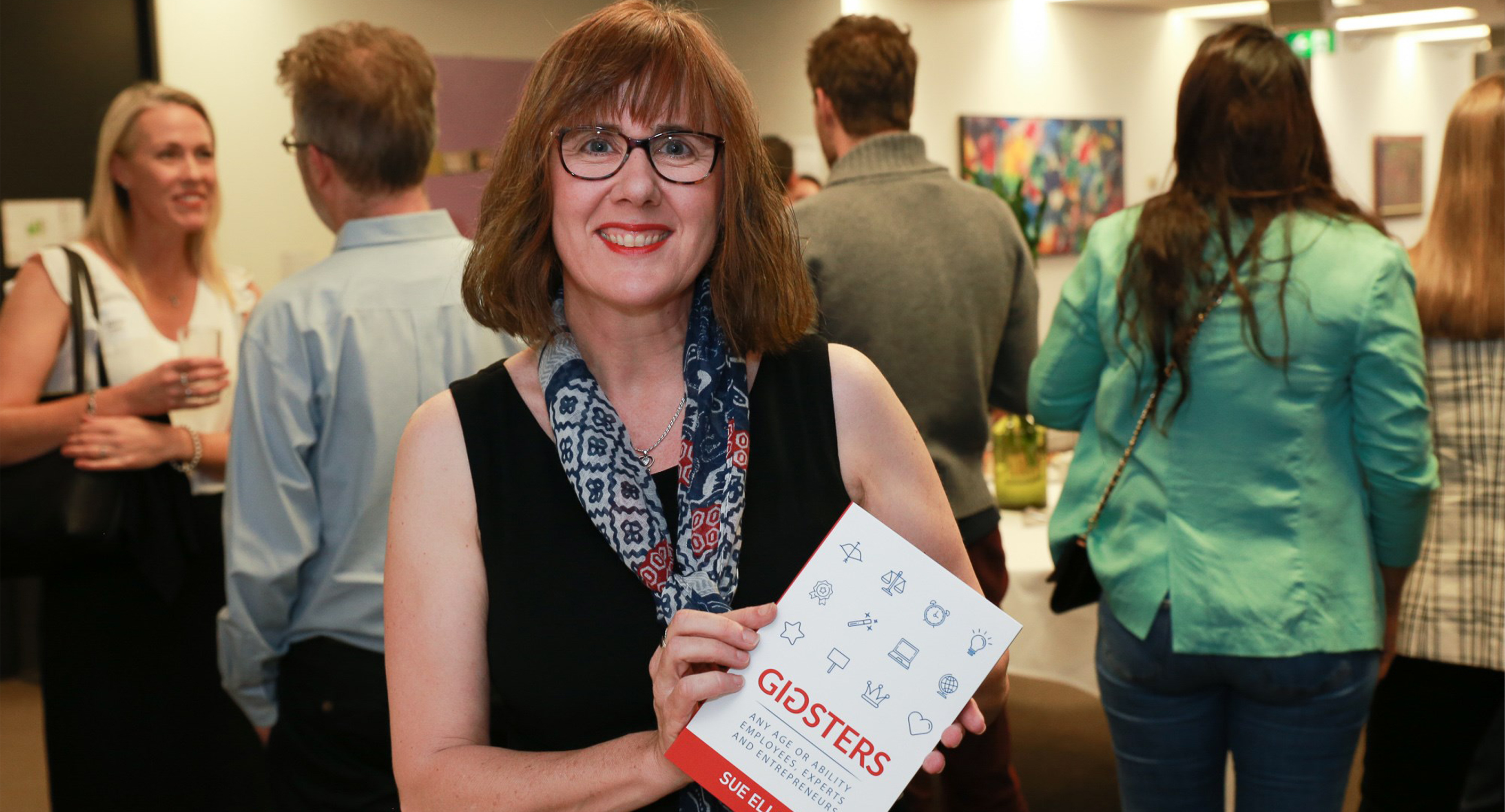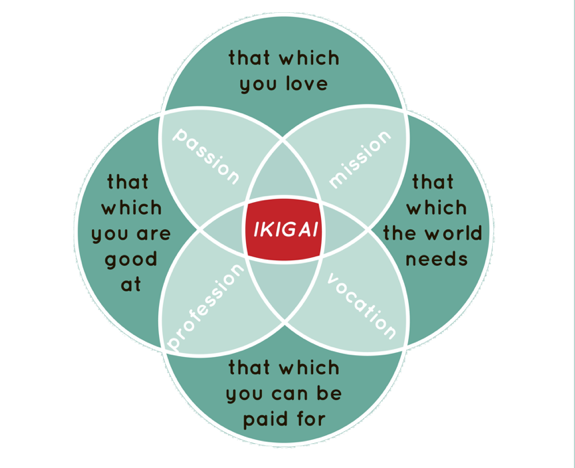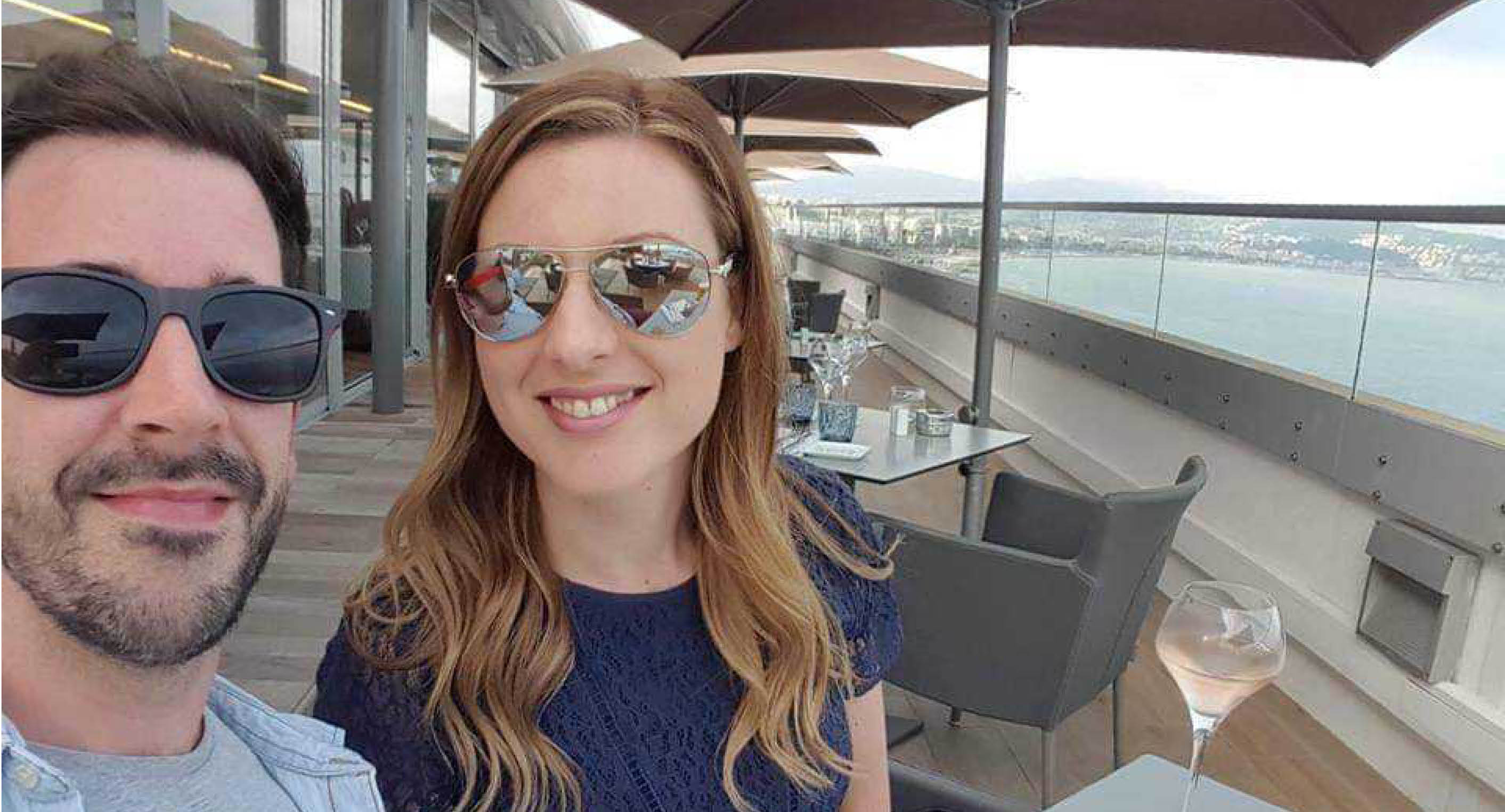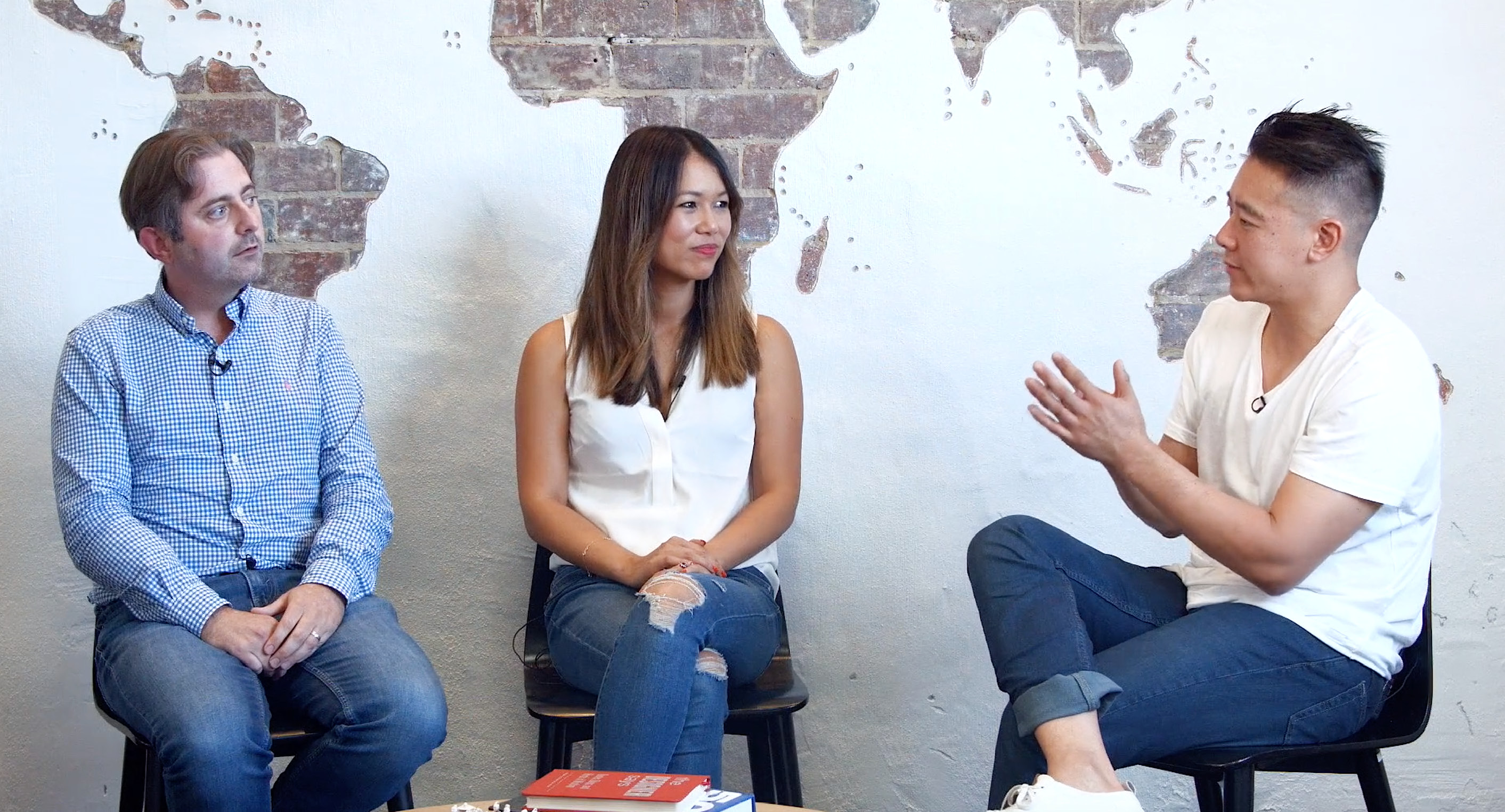TONY: What does the future of work mean to you?
RUBY: The future of work basically comes down to freedom of choice and flexibility. It’s actually this whole new unlocked generation where people should feel free to set up their working lives to suit them. I think it rolls into the gig economy, being able to represent different employer brands, and it being actually quite normal. It gives us, as individuals, freedom of choice in how we want to work and who we want to work for.
BEN: Flexibility is key, especially when you’re working with businesses where there isn’t an element of tech-savviness. We’re trying to attract people to an organisation who are excited about working in technology.
Most of them, these days, will have those side hustles. They will have things going on that aren’t their core day-to-day line of work. If you try and stop that creativity, you’re not going to attract the right kind of business to your people. We want people who are excited and want to develop new stuff. If you’re not willing to accept that they will have other things on the go, then they won’t join your business.
TONY: What is the role of technology in the future of work?
BEN: For me, technology – like automation and AI – especially in the context of human resources and culture is all about workflow performance improvement. Regardless of what we do and how we do it, there will always have to be a heavy human influence on decision making, cultural fit, and trying to attract people to your business.
We are there to be the components of organisation and lead from the front. You can’t do that with a bot. What I see the future of work being, for us, is around efficiency. Being able to drive efficiency through what we do and how we do it, in order to enable us to be more representative of our businesses. To take away the more repetitive, more mundane stuff we have to do in HR, and free us up for more of the fun stuff that will utilise our skills for people and culture.
RUBY: For me, I think I am in this world where I get to play with a lot of this HR tech that comes out. Most certainly, it always comes back to efficiency, and giving me, as Head of Talent, more time to spend on the things I love doing - connecting with the business, understanding future people strategy, and really starting to grow the people within.
The tech that I have loved the most is around sourcing. I think essentially for us in this real space of war on talent - we are all, somewhat in competition with one another to find app developers and software engineers in our industries as a whole. What really helps those individuals find us is often just the channels and we just can’t be on all the different channels that are out there at any one point in time. So when we can automate that, the possibilities become really exciting. I’m really excited about what’s going to be rolled out in the next couple of years as well. Just really being able to pinpoint and identify that exact person, that exact ‘unicorn’ every business is looking for – and using companies like Weploy is incredible.
TONY: One of the things that people always talk about when they hear ‘automation’ is that ‘it’s going to take away my job’. The HR tech sector globally is growing and, often, when I speak to HR leaders they are hesitant to use HR tech because they think ‘what part of my job is going to be removed or taken over?’ What are your thoughts on this? Should they be scared?
RUBY: Often it’s from a time-scarcity point of view, where we don’t have time to trial product as deeply as we should in order to recommend to the business that we should adopt it. I think if there’s anything fear-based it comes from a requirement to put your name behind something, get buy-in from the business, only for it to maybe not work because we haven’t been able to trial it properly. I definitely don’t think HR teams push tech away, I think it’s more that we don’t allow ourselves the time or the luxury of fully embracing it and trialling it as well as we should.
BEN: I think HR teams are becoming leaner and leaner as technology helps us achieve what we need to do, which ultimately does mean that teams are fairly time poor. I cannot see why HR leadership get scared around technology. I think all it’s ever going to do is support you in terms of doing better, interesting things. It’s not only about getting jobs out there; it’s about improving your employee value proposition (EVP) and showing off the attributes of your business. It’s fantastic! Ultimately, if the business doesn’t do those things, there’s a reason why.
I think, moving forward, there will be more uptake in technology in supporting the growth of businesses. But by the same token, it’s not going to be for the sake of uptaking it - there will need to be an absolute data-verifiable reason as to why you are using something. That comes back to, whether it be EVP, time to hire, cost to hire – those things need to be ticked off for you to be able to justify the trialling and usage of those systems.
TONY: People build businesses, not products. But more often than not, HR does not get a seat at the leadership table. Do you think technology will help bridge that gap? Or with technology, where do you see the role of HR in the future of work?
BEN: I think at the moment we’re at the point of leveraging technology to drive product and strategy. I long for the day that we have that seat at the table, which is relevant, and true, and pure. But for now what we have to do is make use of what technology is out there to actually leverage our knowledge and skillsets. There is also the argument about talent acquisition. I think that’s the next big question in the future: does talent acquisition actually sit in HR? Or is it a standalone strategic group that should be engaging with all the different parts of the business to really drive an overarching strategy moving forward?
TONY: By 2020, 40% of the workforce is predicted to be contingent. But even now, when it comes to people strategy, so many HR leaders, when I speak to them, think about the traditional full time worker. Where do you see technology bridging that gap?
RUBY: Workforces are changing. I’ve worked for lots of large companies and traditionally in the talent acquisition space, even in HR, we would push the contingent over to procurement. It’s this big beast that we really didn’t know how to deal with. Legally, there are a lot of contracts to deal with and time-bound employment technicalities. It’s almost easier for HR teams to deal with permanent staff because they’re regarded as the influence culture and engagement.
The reality is as you’re recruiting 40% of your workforce you are going to have to change your entire people strategy. As I started to see more executives leave large business, often the conversation would turn not to finding new full time hires to fill those roles, but ‘will you come back and contract with us?’ They are at an exceptional, pivotal point in their own career but they are also able to give back to us, as employers, as well.
So how does technology play into that? I feel massively around keeping your alumni engaged and keeping those community-building aspects really strong. Your applicant tracking system (ATS) should be able to keep track of where your contingent workforce is at any point in time. To be able to say, ‘Hey, you left us six months ago, has your contract finished? Would you like to come back and work with us? We have a nine-month gig happening.’
Coming back to what you say Tony, ‘You work to live, not live to work’. In technology, I came across a lot of awesome candidates and employees who just wanted to work for nine months and do a mini-retirement for three months on a beach somewhere for their own happiness and well-being. Is there technology out there which can tell us, as employers, when they come back and are on the market?
TONY: That’s where Weploy comes in.
RUBY: Exactly! This is an actual need that the HR market have and need to know more about and start adopting as we very quickly approach 2020 and beyond.
Learn more about how Weploy works with clients and candidates and why we’re the part of the new school of recruitment.

The future of work is right here, right now. Technology is changing the nature of work every single day. Whilst your personal preference may be to have an ‘employee’ type of role, as a gigster, or a person who uses technology to help them get gigs, there are some indicative Gigster Types that will match your values, strengths and context (the variables specific to an individuals circumstances, location or industry).

We were the proud partners of World Forum Disrupt’s Women of the Web event last week which saw over 250 smart and engaged female leaders from the front lines of Sydney’s most influential digital organisations, come together to learn, share knowledge, connect and eat banana bread together. The irony of the event being hosted above an old-fashioned Gentleman's Club was not lost on us, but the energy and empowerment from that room was strong enough to drown out any whiffs of cigar smoke, single malt whisky, or patriarchal leanings that may have been lingering in the air.
The keynote presentations acknowledged thought-provoking and topical issues for everyone, by an incredible panel of guest speakers from the upper ranks of the world’s most innovative and successful organisations. These included but were not limited to:
- The rise of women in digital
- Equal Pay
- Building inclusive and equal company culture
- Breaking into C-Level leadership
- Maternity leave and legal loopholes
- Corporate social responsibility
- Embracing obstacles and redefining 'failures'
Needless to say, we came away inspired and equipped to make a change too. As part of this we wanted to share some of the highlights of the talks we encountered, beginning with Susie Bayes, Head of Partnerships & Philanthropy at The Guardian.
Purpose to Profit: The New Business Paradigm
The argument for companies to elevate social purpose within their business priorities rather than hide them away within “Corporate Social Responsibility” initiatives is becoming impossible to ignore.
J.Walter Thompson research adds to global evidence, revealing that:
- 89% of respondents “care personally” about protecting the planet
- 83% would always pick the brand that has a better record of sustainability
- 90% agree that companies/brands have a responsibility to take care of the planet and its people.
From Unilever’s success through sustainability to Adidas’s selling over a million shoes made from ocean plastic, the uplift to these businesses’ bottom line is proof that doing good is good for business. Susie shared her own purpose journey and that of Guardian Australia, demonstrating that everyone can make a change through their work.

“My Purpose journey started at the age of seven, making my best friend help me run a sale for the Cancer Research Campaign in her garden! I was obsessed with reading about inequality all over the world and through history and really wanted to make a difference in the world. Before university, I taught English for 6 months at a Tanzanian high school, climbing Mount Kilmanjaro with the students. Then, with a deep interest in understanding people and their motivations, I studied Social Psychology. But after I graduated, I got distracted by having fun marketing Paramount, Universal and 20th Century Fox films.”
A New Chapter
Susie came to Australia looking for change, and unfulfilled by her first role at a publisher, was delighted when she was contacted about a role at The Guardian. The news publisher’s unique ownership by The Scott Trust ensured editorial independence and Susie loved their in-depth reporting on areas that weren’t getting the media attention they deserved, including immigration, indigenous issues and the environment.
Joining “Guardian Labs”, the content team, as a Group Account Director, she was responsible for creating ideas and innovative solutions that would help brands connect with readers to achieve their commercial goals. 6 years since its launch in Australia, The Guardian was rapidly increasing audience numbers (now over 5 million Australians) but reach no longer equated to revenue. All publishers faced a challenge: with Google and Facebook taking almost all new digital advertising dollars, how could news pay its way?
Other publishers assumed people wouldn’t pay for content and resorted to clickbait to maximise advertising impressions or thought the only way to get reader support was to gate content behind a paywall. The Guardian chose a different, unique path, predicated on their unique ownership structure and inspired by their mission
“Through clarity and imagination, we will make space for hope”.
They supplemented advertising and brand content by asking those who valued them for voluntary support -through reader contributions and philanthropy. With this mixed revenue model, The Guardian broke even and their unique purpose now makes their civic journalism sustainable.
Finding “Ikigai”
At 2015’s Purpose conference, Susie came across the Japanese concept of “Ikigai”. She realised this captured the pivot she wanted to undertake and looked at how her work could drive positive change which also achieved client objectives. She started to show clients and The Guardian alike the value of creating content that connected to the audience through their values and purpose.
 It’s 4 years since she started this journey, demonstrating a totally new way of working and it hasn’t always been easy. The hard work has now paid off and her new role allows her to create purpose-led brand partnerships with influential partners from Bank Australia to Powershop. She’s even partnered with Coca Cola, highlighting that 70% of their bottles are now made from recycled plastic, providing a pathway to a circular economy.
It’s 4 years since she started this journey, demonstrating a totally new way of working and it hasn’t always been easy. The hard work has now paid off and her new role allows her to create purpose-led brand partnerships with influential partners from Bank Australia to Powershop. She’s even partnered with Coca Cola, highlighting that 70% of their bottles are now made from recycled plastic, providing a pathway to a circular economy.
This work fulfils The Guardian’s mission statement “using clarity and imagination to inspire hope.”. It provides organisations with an authentically relevant way to scale their positive impact by investing in storytelling from The Guardian’s trusted voice.
What’s your Purpose?
Susie is adamant that, whilst it can be hard, everyone can make change through their work. “If you feel like you want more purpose, think about what you care about and what the world needs - finding out more from initiatives like The UN’s Sustainable Development Goals.
You don’t have to leave big business to bring purpose to your work. Once you know what impact you want to create, mastering intrapreneurship can help you achieve it:
- Make a compelling business case (Providing data to back up your hunches)
- Negotiate your internal political system (Identify the decision makers)
- Build communities of purpose (advocates within your business)
- Learn from existing stories and models (do more with less) and
- Foster personal resilience (be obsessed with your mission and spend time with your supporters)
Connect with the League of Intrapreneurs for more
Susie believes that together, we can be a force for change. Purposeful business makes sense for all business and is proven to help companies better innovate, invest, serve customers and engage employees. She recommends communicating purposeful initiatives effectively to see maximum return on investment, ideally with a trusted third party voice such as Guardian Labs.
She concluded with Brené Brown’s quotation, encouraging us to choose the former. Read more content from the Women of the Web event below.
“You can choose courage. Or you can choose comfort. You can’t choose both.”

Six months ago, I reached a massive milestone in my life when my wife excitedly ran down the stairs to show me a positive pregnancy test. Discovering our first child would be arriving in February 2020, we were beyond excited. We were also a little apprehensive about how this massive change would affect our lives. Going through the experience for the first time, we knew we’d have to learn a tonne of new things about how to care for a baby. Sleeping patterns would change and significant chunks of time would be dedicated to caring for our son. One of the biggest worries I had was balancing my role at Weploy alongside my new role as a Father. Marian Baird, professor of Gender and Employment Relations at the University of Sydney, said almost all eligible women take paid parental leave compared to about 25 to 30% of men. But, as 50% parent to my unborn son, not 25-30%, I had some concerns about my entitlements and how it would impact my career.
Streamline your hiring
Business support staff with no hidden fees. Start hiring anytime.
